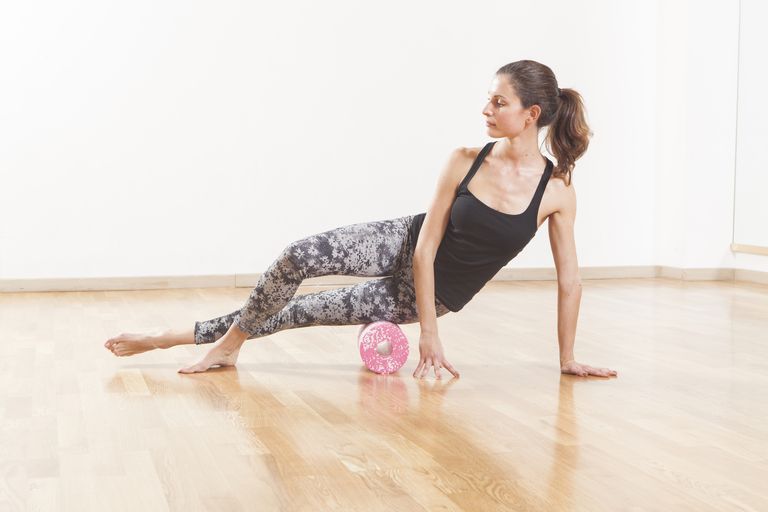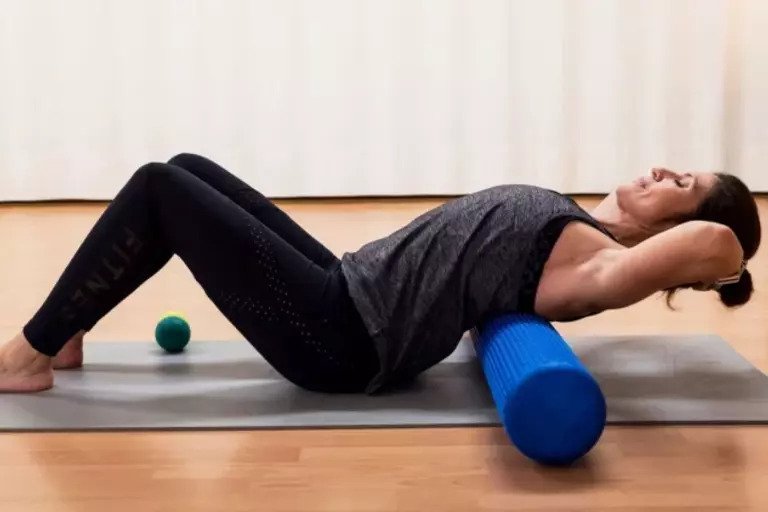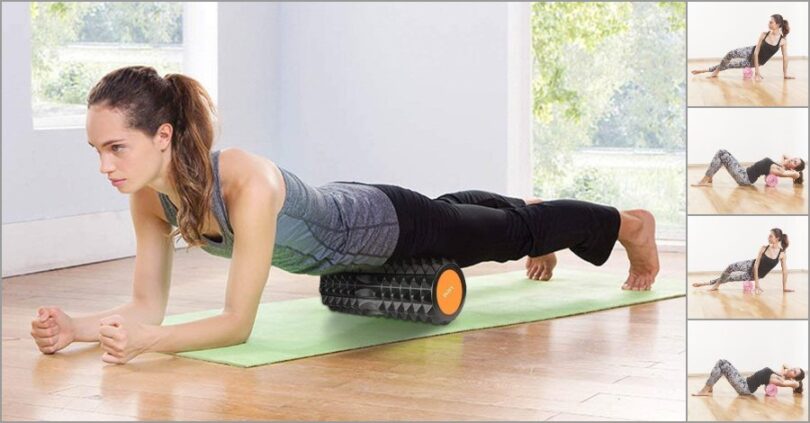If you wake up every morning with an aching lower back or find yourself rubbing sore shoulders, you’re far from alone. The solution might be just an inexpensive tool and a few minutes away. Physical therapists have long turned to foam rollers (the long, cylindrical black or blue pieces of foam you’ve likely seen in the gym) to release tension and, in the process, wipe out aches.
Foam rolling, also known as self-myofascial release, helps release muscle tension by making the top layers of tissues more flexible. Using the foam roller helps release those points and soft tissue adhesion. Pairing foam roller exercises with stretches will open the unrestricted tissues, and you might just find yourself moving more freely and your pain relieved.
Foam rolling also helps increase your range of motion because the muscles around your joints aren’t so tight. Most trainers recommend you foam roll before you exercise to wake up the joints and muscles as well as post-workout to prevent soreness.
If you have knee pain:
Pain in this joint often comes from tightness in the iliotibial (aka your IT band) running up the outside of your thigh or from tight quads (on the front of your thighs).

How to:
- Lie with a foam roller just above your knee on the outside of your leg.
- Make sure it’s perpendicular to your body.
- Move your body back and forth so the roller moves along the IT band from your knee up to your hip.
- Then roll your quads, pausing when you hit a tight spot; bending and straightening knee will help get deeper into the muscle.
- Kneel in front of a couch or wall.
- Keeping your left knee on the floor, raise left foot behind you and rest it against the couch or wall.
- Step your right leg out so the right foot is flat on floor and the right knee is bent, thigh parallel to floor.
- Hold this pose for a few breaths.
- You should feel the stretch in your left quad and hip flexor.
- Alternate sides.
If you have lower back pain:
Pain in your back might actually stem from the front of your body: A tight hip flexor often tugs on your lower back and results in aches in that area. Using a lacrosse ball is actually better for targeting lower-back pain than a foam roller because it can get deeper into the tense tissues. We don’t recommend foam rolling your lower back.

How to:
- Lie face down with a lacrosse ball under your hip flexor, easing your weight into it.
- Roll in small circles until you hit a tight spot, then stop and let the muscle sink into it.
- Bending your knee behind you and letting your lower leg fan in and out can also help.
If you have shoulder or neck pain:
A lot of times with neck pain, people lack mobility in their thoracic spine, aka your upper back. Tightness here can put stress on your neck.

How to:
- Lie with the foam roller perpendicular to your spine, just under your shoulder blades, with your butt on the ground.
- Support the back of your head with hands and extend your spine backward, then return to the starting position.
- Continue rotating backward and forward.
- Stand in the middle of a doorway with your arms extended at the sides.
- Holding onto the doorway, move body forward until you feel the stretch in front of your shoulders and across your chest.
If you have Achilles pain:
Tight calves can often cause pain above or below them, so you might feel the ache up in your knee or down in your ankle or the Achilles tendon. Also you can use a lacrosse balls for treating this kind of pain.

How to :
- Tape two lacrosse balls together, and then roll the balls around the Achilles, working up the calf muscle.
- The groove between the balls fits nicely around the Achilles.
- Get into a plank position with your hands directly under your shoulders, forming a straight line from your head to your toes.
- Push your hips up toward the ceiling so your body forms an upside-down V.
- Keeping the left foot on the floor, lift your right foot and rest it on your left calf.
- Let your right leg relax while feeling the stretch in your left calf.
- Hold for a few breaths, then repeat on the opposite side.
If you have pain in your glutes:
You might have tightness in yours. It’s hard to target tight hamstrings with a foam roller, but try unwinding the piriformis (a small muscle located deep in the buttocks behind the gluteus maximus) to help.

How to:
- Sit on a dense foam roller with your knees bent and feet flat on the floor, easing your weight onto it.
- Shift onto the side of your glutes with the ache.
- Roll around your glutes in circles until you hit a tight spot, then stay there and fan your knee in and out.
- Lie on your back.
- Bend your knee with the achy glute while keeping the opposite foot flat on the floor.
- Then, place the ankle on the same side on the opposite thigh.
- Hold your leg on the achy side and pull both legs toward your chest.
